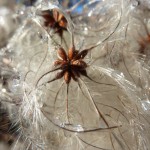Over the last several months I bought my first Mac, dived into Drupal, toyed with the Mac OS Terminal, wrestled with Radiant, coded my first CSS, and tried not to pull out my hair (good thing I have a lot).
The PC-to-Mac switch proved relatively easy, and sensible. Simple, intuitive, more stable, nearly virus-free, with quality hardware and design.
Now I want a new website. For me, web design began a long time ago in a program far, far away called Microsoft Frontpage (easy to use but impossible to follow web standards). Then I jumped ship for Adobe Dreamweaver (steeper learning curve but better-looking results). I also threw the odd blog onto Blogger (straightforward but limited in scope, and often excruciating to implement the basics).
This time around, I want my CMS (content management system) to be powerful and open-sourced. … →

